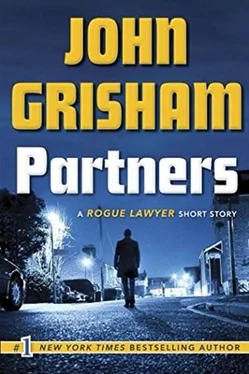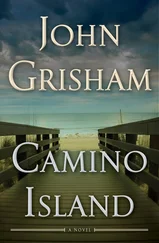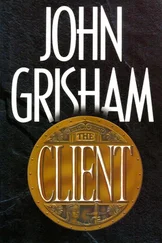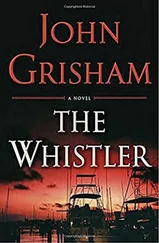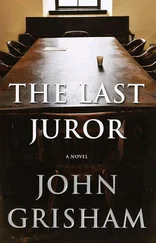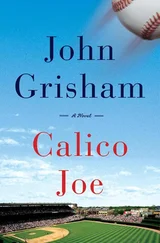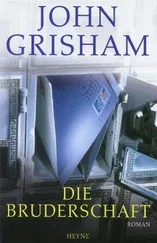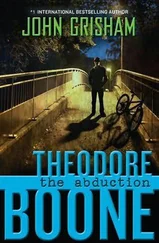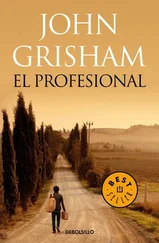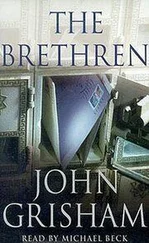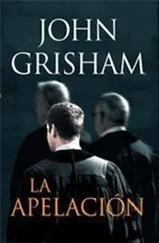Sebastian asked Dr. Glover if it was possible to determine the distance between the.38-caliber pistol when it fired the fatal shot and the bullet’s point of impact. The answer was no; not without additional facts. Any guess would only be speculation.
Thank you, Dr. Glover.
The first officer on the scene-actually the second after Keith Knoxel-was Nat Rooker. He and his partner had been in their car near the Flea Market when they heard the frantic call from Keith Knoxel. Rooker described the scene for the jury: the body of Buck Lester lying on the sidewalk, the blood, his fading pulse, the defendant also on the ground, bleeding from an arm wound. A large screen was set up in the courtroom, in front of the jury, and Max walked Rooker through every inch of the crime scene.
Interesting but also tedious. Sebastian watched the jurors. They were fascinated at first, but Max and Rooker soon bored them. No detail was too small for the prosecutor to hammer on. Nothing was in dispute here. It had been a gunfight; both men had been hit.
After Buck and the defendant were taken away, Rooker and his partner helped the crime scene technicians scour the area. They found two spent casings from the.38. They found four from Buck’s Beretta.
By 5:30 everyone was exhausted, and Schofield adjourned until nine the following morning, a Thursday. They had spent seven days picking the jury and now one day of testimony. When the jurors were gone and the crowd was filing out, the deputies handcuffed Tee Ray and led him away. Sebastian spent a few minutes with Jameel and Miss Luella, seated as always in the front row, as close to the defense table as possible.
He assured them that it had been a good day. No surprises, yet.
The detective assigned to the case was Landy Reardon, from Homicide. A veteran with a fine reputation, Reardon had spent years on the streets and many hours on the witness stand. He was sworn in Thursday morning, and he and Max began slowly plowing through the exhibits. The Beretta owned by Buck was shown to the jury and admitted into evidence, followed by the.38 used by Tee Ray. The six shell casings were next, one at a time. Photos of each were introduced. Only three of the four bullets from the Beretta were recovered by the technicians, and these were methodically produced, discussed, shown to the jury, and admitted. The first shot fired from Tee Ray’s.38 was never found. The second, the one extracted from Buck’s brain during the autopsy, was mounted in a plastic case and handed to the jurors. They gawked at it as they quickly passed it along.
Max was in no hurry. He slowly took each exhibit, discussed it with Reardon, offered it as evidence, got it admitted, then made a production of showing it to the jury.
Without the statement Tee Ray gave the police, crime scene ballistics would have taken two days, as experts would have tried to prove who shot what and where the bullets landed. Detective Reardon explained to the jury that late on the afternoon after the killing, Mr. Cardell was brought from the hospital to the Central Police Station. He agreed to answer some questions. He waived his Miranda rights and said he knew what he was doing. The screen appeared again and the courtroom lights were dimmed.
The video began. Tee Ray was sitting at a table, his left elbow covered with gauze and tape. There was a small bandage on his chin, another on his forehead. He was alert, coherent, and said he was not under the influence of medication.
Reardon, off camera but loud and clear, went through the preliminaries. Date, time, place, full agreement to make a statement, waiver of the right to remain silent.
Reardon said, “Tell me what happened last night.”
Tee Ray shifted his weight, grimaced as he touched his left elbow, then shrugged and began. He told his story without interruption. While he was on his knees, in full compliance, the officer began firing. The first shot hit the sidewalk in front of Tee Ray. He touched both bandages on his face where the flecks of concrete struck him. The second shot grazed the shoulder of his coat. The third hit his elbow. He kept screaming for the cop not to shoot. When he got hit, he fell, scrambled, and tried to get under a parked car. The fourth shot hit the car. To save his life, he managed to yank out his gun and fire two shots. There was no other cop around during the shooting, but one appeared just afterward.
Reardon:So you admit shooting the officer?
Cardell :In self-defense. He shot at me four times while I was on my knees with my hands up. It was pretty obvious he was going to kill me.
Reardon:What were you doing on that street at that time of the night?
Cardell :I live there. I can walk down any street anytime I want.
Reardon:Were you moving drugs into the Flea Market?
Cardell :I’m not answering that. At this point, I ain’t talking no more and I want a lawyer.
Reardon:Just a couple more questions.
Cardell :No, sir. I’m done. Nothing else. I want a lawyer.
Reardon:Where did you get the gun?
Cardell :I have the right to remain silent.
Reardon:Do you know a crack dealer by the street name of Tox?
Cardell :I have the right to remain silent. A lawyer, please.
The screen went black. The video was over.
The lights came on and the screen was removed. Judge Schofield said it was time for lunch.
Sebastian began the afternoon session by asking Reardon if he had a copy of the defendant’s hospital records. He did not, so Sebastian produced the records and asked Reardon to quickly scan them. He pointed out certain sections, then forced Reardon to admit that the tests performed on Mr. Cardell’s blood revealed no trace of alcohol or narcotics, prescription or otherwise, when he was rushed into the ER with a gunshot wound.
Sebastian asked what kind of rap sheet the police had on Mr. Cardell.
Nothing. No convictions. No arrests.
“Not even a speeding ticket?” Sebastian asked, astonished.
Reardon shook his head. No.
By 3:00 p.m. Thursday, the second day of testimony, the State had offered virtually all the proof it had. Buck Lester had been shot and killed by a single bullet, one fired by the defendant, Thomas Ray Cardell. It was still unclear who shot first, last, and for what reason or reasons. Indeed, the only clue as to what happened during the encounter was provided by the defendant himself in his brief video statement.
The only way to prove Cardell was guilty of murder was through the testimony of the missing witness, Officer Keith Knoxel. During his investigation, Detective Reardon had interrogated Knoxel at length and, as was his practice, had recorded Knoxel’s version in an affidavit-a sworn statement. It had been typed by a police stenographer and notarized by a police administrator.
The affidavit was not admissible in a court of law because (1) the witness was not available to verify it and (2) the defendant, through his attorney, had not been present to confront and cross-examine the witness.
Max Mancini, desperate at this point, attempted to enter the affidavit into the record. Sebastian objected. During a recess, they argued back and forth in Judge Schofield’s chambers. Judge Schofield said no, it’s not admissible.
The State had no choice but to rest its case. The jury was sent home for the day. Back in chambers, Sebastian went through the standard ritual of moving to exclude the evidence offered by the State and asking the court to direct a verdict of not guilty in favor of Thomas Ray Cardell.
Читать дальше
